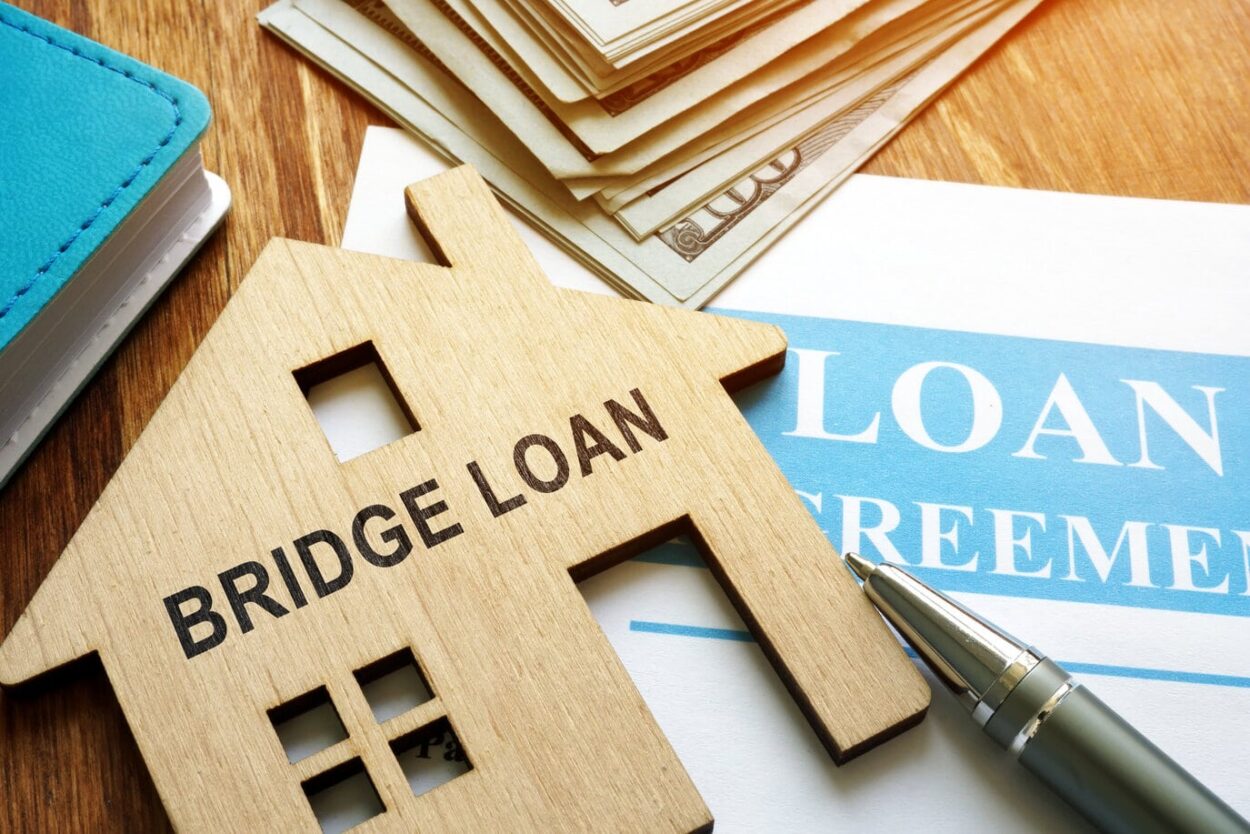Jasmine Birtles
Your money-making expert. Financial journalist, TV and radio personality.


With the housing market picking up again, many are considering a change of scenery. However, there’s always the risk that something goes awry with your buying plans. To avoid getting stuck in a failing chain, or to buy un-mortgageable properties, you could try a bridging loan.
But what is a bridging loan – and how does it work? Let’s uncover the pros and cons of taking out a bridging loan to buy property.

Sometimes, a mortgage isn’t the most appropriate option for buying property. Some properties aren’t eligible for traditional mortgages, either. For example, properties in need of renovation.
A bridging loan bridges the gap between finances for property buyers. It’s a short-term loan compared to a mortgage, and can be expensive to arrange. However, it often helps home movers out of a tight spot – or helps them buy un-mortgageable property.
Bridging loans are NOT mortgages. They are more expensive and very short term – often only a year – and can be more expensive to extend or renew, too. They are a form of emergency property finance – you shouldn’t see them as an alternative to a mortgage. Instead, it’s more like a step towards a normal mortgage.
There are a few times a bridging loan might be used.
First, if you’re a home owner moving to a new property, and your buying chain collapses, it can help you. Instead of dropping your purchase, because someone earlier in your chain pulls out, you can continue. Then, when your property eventually sells, you use the proceeds to pay off the bridging loan.
Second, some properties won’t be eligible for a mortgage. For example, those with a leasehold with under 99 years left. Or, a property seen as ‘uninhabitable’ – which could be something as simple as not having a toilet currently installed.
Sometimes, a property isn’t suitable for a mortgage because it’s got ‘non-standard construction’. This means it doesn’t use typical foundations, wall construction, or roof materials – but doesn’t necessarily mean it’s a rundown or unsafe property. For example, an eco-home built with fire-proofed hay insulation is non-standard.
In circumstances like this, you can apply for a bridging loan to purchase the property and carry out required work. Once it meets traditional mortgage requirements (such as you’ve paid to extend the leasehold again), the mortgage can pay off the bridging loan.
Bridge loans are popular for those buying property at auction, as these are often the ones that require additional work to meet mortgage standards.
There are two types of bridging loan: closed and open. The type you get depends on your circumstances.
A closed bridging loan has a short-term and set end date and is most commonly seen in property purchases where you’ve exchanged contracts but need the loan to complete purchase. For example, if you’ve exchanged contracts on buying a new home but the buyer of your current property drops out or has to delay purchase).
Open loans don’t have a fixed date of repayment but will have an end term – usually twelve months.
You’ll need to prove you have a way to repay the bridging loan. For example, that you have a property you’re selling that will raise the funds to cover the loan costs.
You also have to show the details of the property you’re buying, including what you’re paying for it. And, if relevant, how much you anticipate you can re-sell it for if you’re planning to ‘flip’ an auction renovation project.
The loan-to-value (LTV) ratio is lower than a typical mortgage at around 75%, so you’ll need to have some cash reserves to cover some of the purchase. You’re putting the property up as collateral against the loan, too: this means if you don’t repay, the house can be repossessed.
Bridging loans are costly – setup fees are around 2% of the loan and interest is charged monthly. They’re far more expensive than a mortgage. However, the short-term loan can help bridge the financial gap before you get the cash you need.
Before applying for a bridging loan, speak to an independent mortgage broker. They’re in the best position to make sure a bridge loan is suitable for you, or if there are alternatives to consider instead. Get in touch with our partners L&C mortgage brokers for a FREE consultation.
If you were planning to be a cash buyer for your next property, based on the sale of your current one, consider a flexible mortgage. This can buy you more time as you place a mortgage on either your current or new property, compared to the short-term option of a bridging loan.
You might also want to consider letting out your current property while you try to sell it. In this instance, you’d apply to remortgage your house on a buy-to-let mortgage and use the capital raised from that to buy your next home. The rent from your let property will cover mortgage repayments until your home sells, too.
From investing in buy-to-let to first time buying tips, we’re here for you. Check out these property articles next!
*This is not financial or investment advice. Remember to do your own research and speak to a professional advisor before parting with any money.
